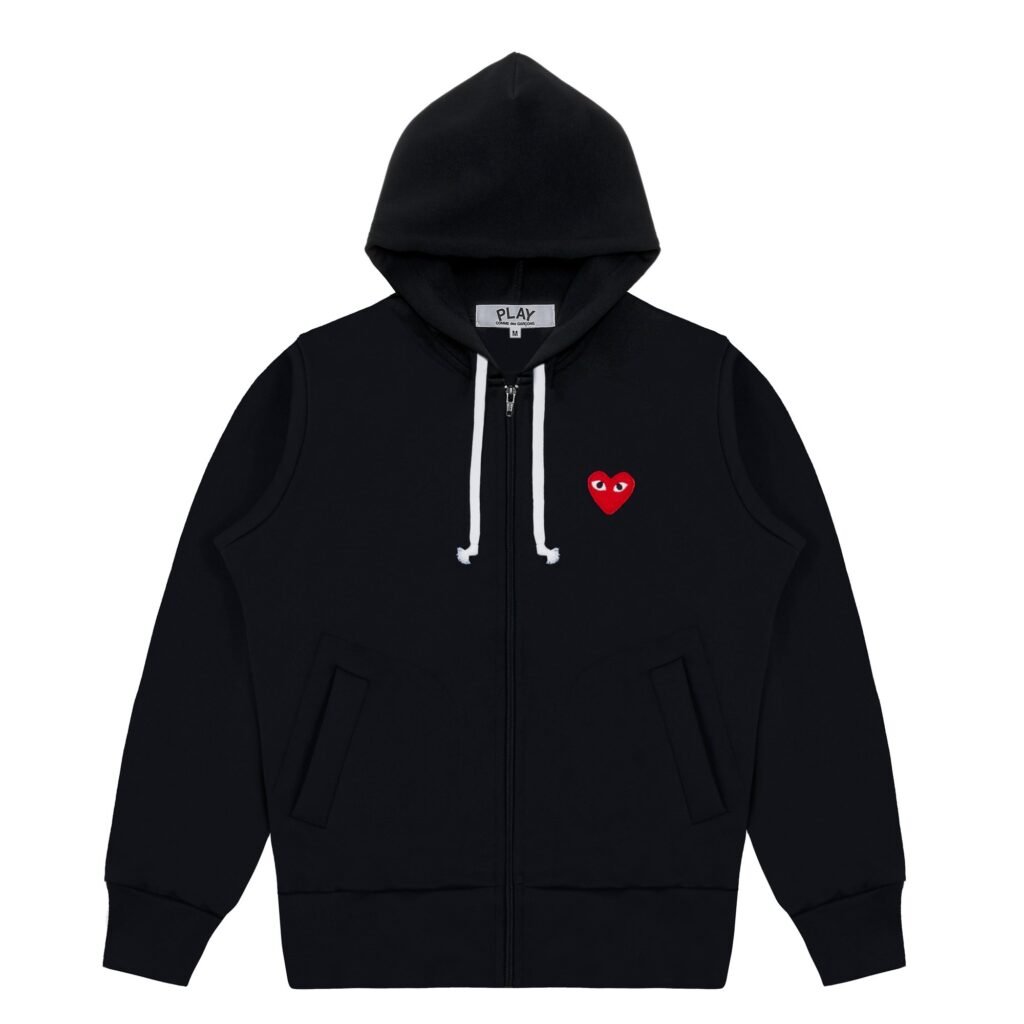Comme des Garçons, often abbreviated as CdG, is a name synonymous with avant-garde fashion and innovative design. Founded by the Japanese designer Rei Kawakubo in Tokyo in 1969, the brand has consistently pushed the boundaries of traditional fashion. Comme des Garçons, which translates to “Like Boys” in French, has redefined what fashion can be, combining art, rebellion, and a unique aesthetic that challenges conventional norms.
The Visionary Behind the Brand: Rei Kawakubo
Rei Kawakubo, the mastermind behind Comme des Garçons, is celebrated for her visionary approach to fashion. She has a reputation for creating pieces that defy standard definitions of beauty and form. Her designs often feature unconventional silhouettes, asymmetric shapes, and a monochromatic color palette, primarily focusing on black. Kawakubo’s work is not just about clothing but about making bold statements that reflect her thoughts on society, gender, and the human form.
The Rise of Comme des Garçons
The brand gained significant attention in the early 1980s when Kawakubo showcased her collections in Paris. The debut was controversial; the pieces were radically different from the colorful and glamorous fashion of the time. Her designs were described as “anti-fashion” due to their deconstructed and raw aesthetic. Despite the initial shock, or perhaps because of it, Comme des Garçons quickly became a symbol of cutting-edge fashion.
Iconic Collections and Collaborations
Comme des Garçons is known for its prolific output, with numerous collections that continue to surprise and provoke. Each runway show is a theatrical experience, with models often appearing as moving art pieces rather than traditional fashion displays. Notable collections include the “Lumps and Bumps” collection of Spring/Summer 1997, which featured padded garments that distorted the human form, and the “Broken Bride” collection of Spring/Summer 2005, which deconstructed the traditional wedding dress.
In addition to its mainline collections, Comme des Garçons has a history of successful collaborations. The brand has partnered with various artists, designers, and brands, including Nike, Supreme, and Louis Vuitton, bringing its avant-garde sensibility to a broader audience.
Comme des Garçons PLAY
One of the most accessible lines under the CdG umbrella is Comme des Garçons PLAY. Known for its casual, everyday pieces adorned with the iconic heart logo designed by Filip Pagowski, PLAY has become immensely popular. This line includes a range of items from t-shirts and hoodies to sneakers, making CdG’s distinctive style available to a wider audience without sacrificing its unique identity.
Influence and Legacy
Comme des Garçons has left an indelible mark on the fashion industry. Kawakubo’s influence extends beyond her brand; she has nurtured a new generation of designers through Dover Street Market, a multi-brand retail and concept store. The store embodies her ethos of creativity and innovation, showcasing emerging talents alongside established names.
The brand’s influence is evident in the way it has challenged and expanded the understanding of fashion. Comme des Garçons’ approach to design encourages viewers to question and reflect, rather than passively consume. Its pieces are often seen as wearable art, pushing the boundaries of what clothing can represent.
Conclusion
Comme des Garçons is more than just a fashion brand; it is a symbol of innovation, creativity, and defiance against the conventional. Under the visionary leadership of Rei Kawakubo, the brand has redefined what fashion can be and continues to inspire and challenge the industry with each new collection. Comme des Garçons‘ enduring influence and legacy are a testament to its unique vision and unwavering commitment to pushing the boundaries of fashion.

